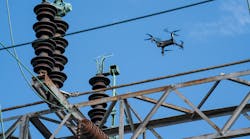With ABB's PSGuard WAMS, operators can monitor their power network very precisely. Increased congestion restricts the flow of electricity and threatens the security of supply. Compounding the congestion is the gradual addition of another 1000 MW of electricity from wind generation in the northeast, as well as the closure of coal-fired power plants in the south, which is creating even greater demand for power from the north. The solution that stabilizes and protects the corridor is an intelligent combination of ABB’s PSGuard monitoring system with phasor measurement units (PMUs) and three phase-shifting transformers installed at critical nodes in the network. These ABB transformers in three of APG's substations protect the power lines by regulating the power flow and by preventing the loss of lines through physical overloading. Since the spring, PSGuard has monitored loading of the 220 kV double lines, and in the future will also coordinate the operation of all three phase-shifting transformers for maximum performance. Line over- and underloads can be balanced, and losses caused by uncoordinated loop flows (inadvertent power losses as electricity is transmitted through the network) can also be minimized. With these technologies, APG can get the most use out of its existing transmission capacities, and at the same time significantly reduce the risk of a blackout caused by overloaded lines. At the beginning of December 2006, all three transformers and the monitoring system were jointly and successfully commissioned. An additional order for the integration of the PSGuard system with the network control system has already been awarded by APG.Satellite-synchronized measurements Austrian Power Grid’s PSGuard employs applications like phase angle monitoring (PAM), which scrutinizes network stresses caused by heavily loaded lines, and line thermal monitoring (LTM), which determines average line temperature and temperature changes. Measurements are taken with ABB PMUs – measuring devices that are installed at critical nodes in the power network and use a GPS satellite signal to time-synchronize voltage and current readings as they are taken from their points of origin. Data can be streamed into a control center from far-flung points in the grid, where it is evaluated to give grid operators a precise picture of what is happening in their system, online. They can also finally see what is happening beyond their own control area – an advance over traditional monitoring and protection methods.An effective solution It means they can react swiftly and effectively when confronted with sudden interruptions or bottlenecks in the power flow, and win time to prevent the spread of disturbances that can potentially bring down the entire network. “The information, especially on the load flow and average temperature progression on the double lines will aid our operational staff in fully utilizing their transmission capacity and maintaining integrity at the same time,” said Herbert Erven, head of secondary systems at APG.



